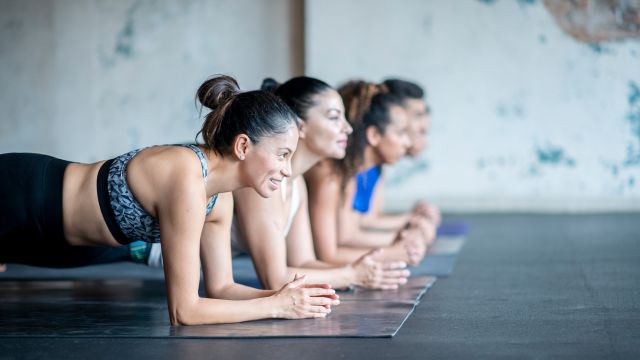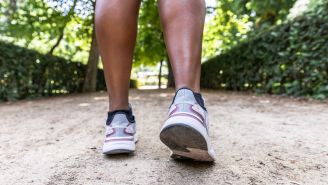Almost everyone feels a little back pain every now and then. Sometimes it’s just a nuisance, but often, the ache can impact your day-to-day activities. The good news is that by doing conditioning exercises that strengthen your core muscles, you can minimize the severity of that pain.
Your core muscles are those that make up your abdominal midsection and include your abs, glutes, obliques, and lower back. In addition to helping prevent back pain, building a solid core can encourage weight loss, improve posture, and increase flexibility.
There are many ways to achieve a strong core, including doing popular abdominal exercises like crunches, reverse crunches, and leg raises. But one of the most beneficial moves that engages many parts of the body, as well as your core, is also one of the easiest to do: the plank.
How planking helps your back…
Not only does planking strengthen your core and back muscles, it can also help you reach and maintain certain yoga poses that further strengthen your body. In fact, the exercise is used in many spine conditioning programs because it helps keep back muscles stable, thereby preventing pain and strain.
This simple workout also strengthens and helps pull your shoulder blades up and back, improving your posture. Ultimately, engaging the shoulder muscles also improves your flexibility and range of motion.
…And the rest of your body
Since the diaphragm is activated while doing exercises that work the abdominal muscles, planking can improve your respiratory system and breathing patterns, as well. Additionally, this exercise, as with almost any physical activity, can reduce fatigue, anxiety, and stress, all while improving alertness and concentration.
Proper planking form
The simple plank does not require any fancy equipment, and it’s easy to do.
Start by lying face down on a mat. Keeping your back straight, lift your body off the mat into a position similar to the “up” part of a pushup, supporting your weight on your toes and your forearms (instead of your hands). The key is to keep your body in a straight line from your head to your toes. Maintain this position without movement—and without your butt and hips sagging to the mat—for 30 seconds. Then rest for another minute. Repeat this up to 5 times throughout the course of the day.
As with any exercise, sometimes you need to make your repetitions less intense, particularly when you’re starting out. So if 30 seconds isn't sustainable, don't strain yourself. Instead, try holding a plank for 15 seconds. When you're comfortable with that, gradually increase the time you hold the position. In this way, you can build the strength and endurance you need to handle tougher sessions down the road.
You may see challenges or contests on social media calling for people to hold their plank pose for as long as they possibly can. A word to the wise: Holding a plank longer isn’t always better.
Planking for an extended period could cause your form to deteriorate, which can put pressure on your back instead of strengthening it. Stick with intervals that are 30 seconds long. For an added challenge, try lifting your legs, one at a time, off the ground and holding them suspended for a few seconds each.






